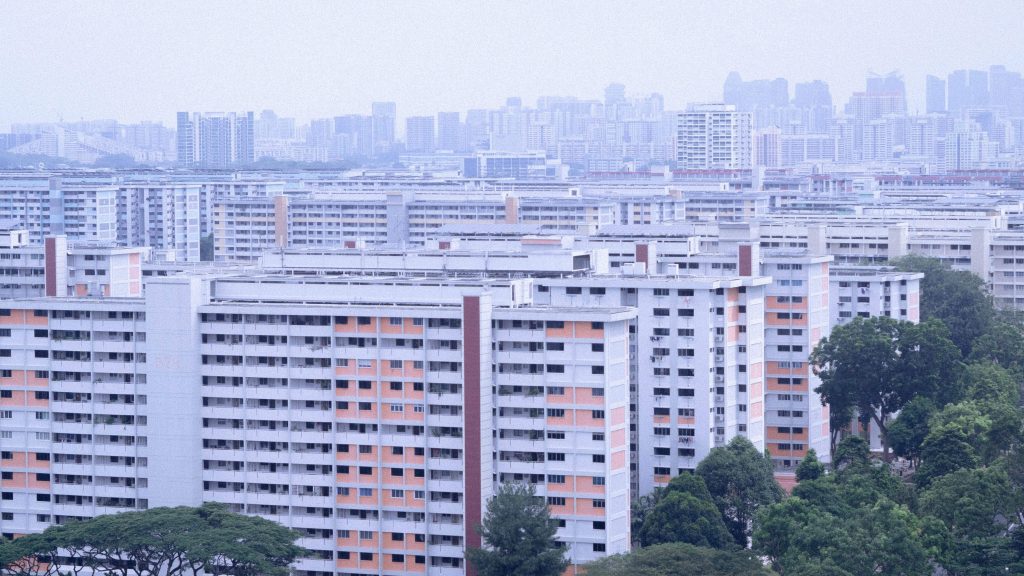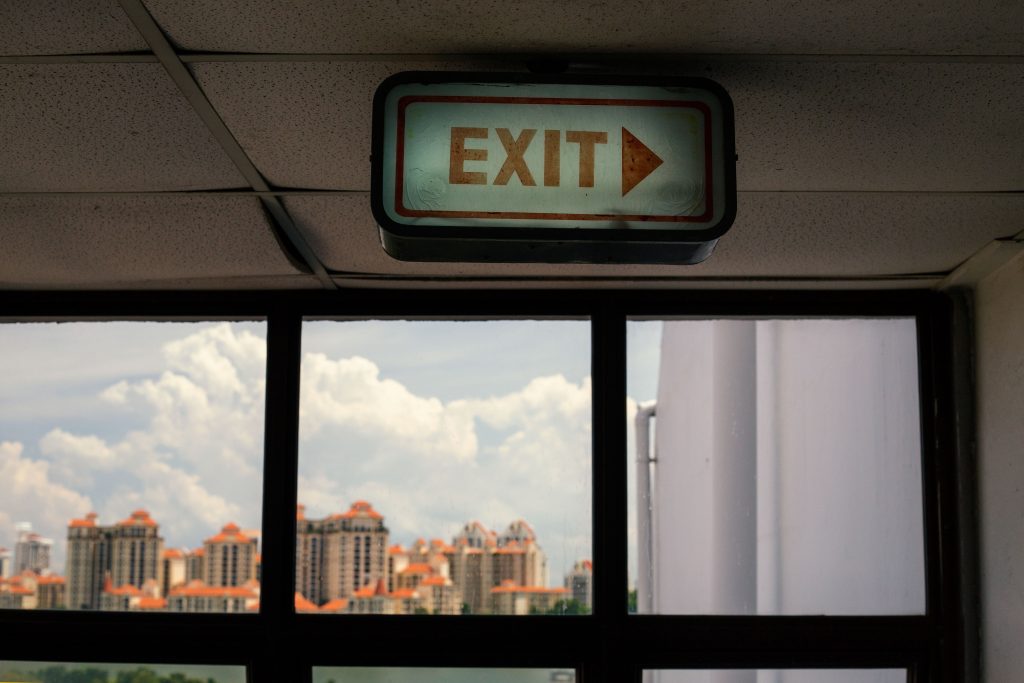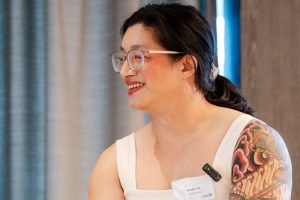Top image: Marisse Caine/Rice Media
For many queer Singaporeans, owning a Housing Development Board (HDB) flat is little more than a pipe dream.
By virtue of unmarried Singaporeans being unable to buy an HDB flat before the age of 35, the exclusion extends to many Singaporeans who identify as lesbian, gay, bisexual, transgender, and/or queer (LGBTQ+).
ADVERTISEMENT
Some queer Singaporeans work around this simply by waiting until they are 35 to buy a flat under the Single Singapore Citizen Scheme or the Joint Singles Scheme. Those with more well-lined pockets might opt for private housing instead.
For others, homeownership is an idea that is simply not entertained—they either live with their immediate family members or rent in perpetuity or migrate to another country that does not sell a fantasy of homeownership for all while excluding its queer citizens from this promise.
Is the PLH inclusive?
In late October 2021, the government announced details of the Prime Location Public Housing (PLH) model, promising the development of new public housing that, despite being located in prime areas that would usually fetch top dollar prices like Pinnacle@Duxton’s million-dollar price tags, would remain “affordable, accessible, and inclusive.”
For this reason, the PLH model introduces specific measures to keep public housing affordable, including an income ceiling of S$14,000 per nuclear family, the exclusion of those who have owned or sold a private property in the last 30 months, an extended minimum occupancy period of 10 years, and the prohibition against renting out the entire unit. These measures, according to HDB, ensure that public housing serves its core purpose of providing affordable homes rather than merely being pawns in the property game.
These developments, however, were shadowed by the news that singles, regardless of age, will be excluded from eligibility for prime location homes, both new and resale. And for many queer Singaporeans, this felt like yet another slap in the face.
Though Minister for National Development Desmond Lee has attributed the exclusion of singles to the fact that the PLH model is “untested in the market,” it remains to be clear how exactly the objectives of public housing policy require the continued exclusion of unmarried Singaporeans, particularly those who are queer, for whom the family home can often be an unsafe place.

Making do with what we have
Queer Singaporeans have long been able to find ways of making do in a society that does not fully embrace their full selves.
Aside from waiting until they reach 35 before buying a HDB apartment, queer Singaporeans—coupled or otherwise—have the option of purchasing private property, provided they have the funds.
Or they can rent. Various Facebook groups exist with the express purpose of helping queer individuals find rooms or apartments for rent.
Queer Singaporeans who have gone through the process of navigating adulthood have taken it upon themselves to impart practical knowledge to their peers or younger queer Singaporeans.
ADVERTISEMENT
In 2020, real estate agent William Tan set up Prident, which serves the community by offering advice on financial matters, including real estate. This follows the publication of Same But Different in 2017 by lawyer Indulekshmi Rajeswari, who led a team of lawyers to put together the practical guidebook for navigating common legal issues such as property, finance, and cohabitation.
Most heterosexual Singaporeans are less likely to leave their parents’ abodes until they get married, to the extent that single millennials continue to make headlines for moving out—something young adults in other parts of the world routinely do without fanfare.
But for many LGBTQ+ adults, moving out is less a choice and more a necessity.
“I felt the need to immediately move out of my family home for my sanity amid the pandemic last year when the nation entered the first circuit breaker period, and I had to move home from campus housing,” said Sapphire, 24, a recent graduate who identifies as a lesbian woman.
Though moving out had always been part of her plan, Sapphire felt she was being “shoved back aggressively into the closet” while having to “expend incredible mental energy to sustain a relationship with my partner at the time while protecting my safety.” Sapphire comes from a Christian family.
“I was eventually outed, and my family did not take this well. I hadn’t realised how much my mental health would be affected by the pandemic and feeling constantly fearful around my family.”
Likewise, Aman (they/them), a 24-year old who works in a startup, moved out after not being able to settle back in with their parents after returning from living on campus.
Realising that what most people would consider “home” was, for them, unsafe and unlivable, Aman, who identifies as agender and pansexual, said, “Continuing to live with my family was just not a tenable situation anymore, and I could not justify the cost it had on my mental health and my spirit.”
“Even if it means having to pay through my nose for rent, I will very gladly pay to have a life of my choosing.”
HDB: Making Singapore Our Best Home
What is commonly understood in Singapore as public homeownership comes in the form of a 99-year leasehold, implemented to fulfil the government’s promise of improving living conditions in the 1960s. The programme has been touted as a success, achieving a figure of 90% homeownership among Singapore citizens and permanent residents by the turn of the millennium.
To achieve this, two elements were crucial: the idea of 99-year leaseholds as ownership, with emphasis on the notion of owning your HDB; and more importantly, the narrative of these 99-year leaseholds as a retirement asset whose value will appreciate.
As sociologist Prof Chua Beng Huat has shown, the government is “obliged to bear the responsibility of ensuring the security of the investment,” since it encouraged the whole nation to invest in public housing flats. The government has thus introduced a host of policies over the years to ensure the value appreciation of public housing and support the spiralling costs of public housing.
Aside from the monetary investments that Singaporeans put into state-built housing units, HDB flats are a symbolic and emotional investment into the home, and by extension, the country.
But HDB flats do not merely house people and families. HDB flats house ideologies, reproduce them, and ensure their continuity through generations. It defines the racial balance in society, what a family unit should look like, and who would be left out.

Painting the white walls rainbow
Last week, Workers’ Party Member of Parliament Louis Chua called on the government to expand the public rental scheme so people can choose to rent instead of owning HDB flats.
ADVERTISEMENT
In response, Senior Minister of State for National Development Sim Ann said that making rentals mainstream could reshape social norms and weaken communities, because “unlike homeownership, where people sink their roots, rentals are more transitory.”
For so many Singaporeans, the notion of renting as a sunk cost has been deeply ingrained. Why, after all, waste money on rent when you could be saving it for a house?
Yet, for many queer individuals, the price of independence away from a heteronormative household is well worth it, even if it takes out a solid chunk of their take-home pay.
For S$600 to S$2000 a month, one could barter for the freedom to defy gender norms, bring a lover home, or simply exist unapologetically as a full queer person while redefining what “home” means.
Many queer individuals, like Aman and Sapphire, choose to live in queer communes—households that comprise fellow queer people.
“I was very specific about moving out into a queer household, and I wanted to live with people who were not just queer, but also shared similar ideals as me,” said Aman, who currently lives with a housemate who is non-binary. “We share the same ideas of what community, care, and intentionality look like.”
Sapphire’s concept of home is similarly one that offers respite away from familial connections that are “wrought with overwhelming complexities and intricate emotional enmeshment.” She now lives in Katong with two other queer women, whom she calls her “chosen family.”
According to Sapphire, moving away from her immediate family has helped to improve her relationship with them. It has given space for her to grow as a queer person and given her parents space to come to terms with her queerness.
“Living with proud queer folk who have lived through similar experiences of familial or relationship trauma helped me realise I don’t ever have to suffer alone,” said Sapphire.
But even as queer Singaporeans make do by renting a space of their own, one can’t help but see one’s peers getting ahead and moving through Singaporean rites of passage, while queer people remain left out.
The idea of a lavender marriage—in which homosexual men and women partake in a marriage of convenience with someone of the opposite sex—is one that queer people worldwide consider, making do with exclusionary state policies to tap on the same benefits their heterosexual counterparts enjoy.
Several queer individuals we spoke to expressed having seriously considered a lavender marriage when the time comes for them to access HDB flats.
Ryan, 19, said, “I have talked to a close lesbian friend of mine about it before. We’re very close, and the only difference between us and a married couple is the lack of romantic attraction.”
On the other hand, others simply do not harbour fantasies of being a part of the heteronormative trajectory of owning a public housing flat.
Drake, 24, plans to rent for perpetuity once he has a stable income, with no intention of buying public housing.
“Honestly, with all the BTOs I’ve seen in person, I don’t think they’re worth as much as they’re sold at,” said Drake.
“If I’m going to spend hundreds of thousands of dollars for a home, I’d rather it be a house I absolutely love, at a place I can fully call my own, where the state isn’t so cruel to the people around me. Such a place does not exist, so renting it is.”

Redefining home
When the average Singaporean thinks about LGBTQ+ discrimination in Singapore, housing policies might not be the first place they look. After all, there are graver matters like Section 377A, which continues to criminalise sexual acts between consenting men.
Yet, even as the government assures queer Singaporeans that Section 377A will not be enforced, the fact remains that queer Singaporeans continue to face discrimination in other material aspects of their lives, even if laws and policies are not explicitly coded as anti-queer.
While recent changes to the Maintenance of Religious Harmony Act in 2019 was a step in the right direction towards protecting the LGBT community from violence incited by religious groups or movements, what do we do when the violence is psychological and comes from the very place most people consider a safe haven?
Home is frequently used as a metaphor for the nation. This is not unique to Singapore, but it is undoubtedly more palpable in a place where housing policies heavily influence one’s major life decisions.
One important ideology that the HDB promotes is the ideal family unit. Given the massive demand for a limited resource, it seems natural that the government would prioritise homes for Singaporeans it can count on to alleviate the nation’s declining birth rate—in other words, heterosexual Singaporeans who are either married or certain enough about marriage to pay a non-refundable downpayment.
But home, as Wayne Koestenbaum writes, has “grim meanings for the gay kid or the kid on the verge of claiming that ambiguous identity. Home is the boot camp for gender; at home, we are supposed to learn how to be straight. Queer identities arise against normative structures of the home, whether or not we later faithfully replicate the canons of domesticity.”
And if we are to see the nation as an extension of the home, with homeownership as an extension of having a stake in the country, then perhaps, for the queer Singaporean, renting is indeed a temporary measure in a country where queer citizens are unable to, using Minister of State Sim Ann’s words, “sink their roots.”
By extension, then, it is easy to see why emigration is a tempting prospect for so many queer Singaporeans, whose existence in their home country runs on borrowed—or rented—time.
Perhaps for queer Singaporeans, it might be more fruitful to remember the purpose of public housing.
While the goal is undoubtedly to provide affordable housing for Singaporeans, as the better parts of the PLH model have shown, it seems that queer Singaporeans continually take the backseat.
Meanwhile, their married heterosexual counterparts have enjoyed years of playing the investment game with a property whose purpose is fundamentally to house people, not capital, in the first place.
It seems, then, that both heterosexual and queer Singaporeans simultaneously redefine what home means. But for queer Singaporeans, home is less a piece of property to harvest for later returns and more of a chosen family.
As Sapphire aptly describes, “We are a lot more invested in each other’s emotional growth, which we make a conscious choice and effort to support, rather than being obligated to because of blood ties.”







